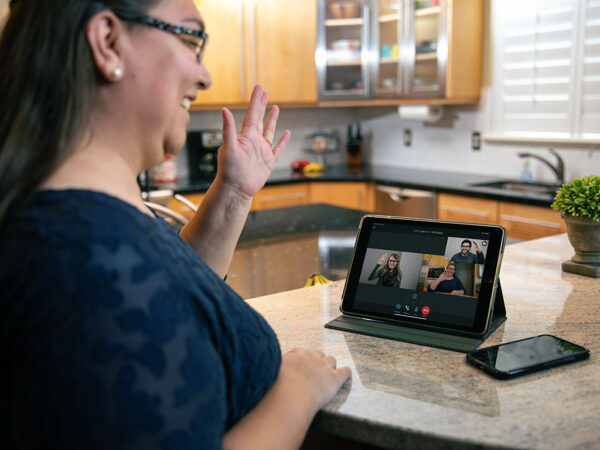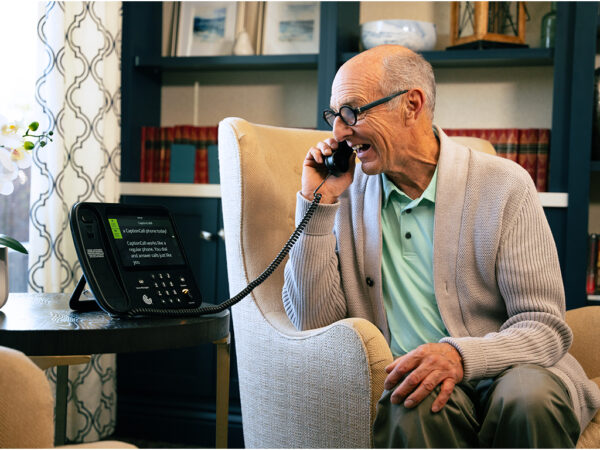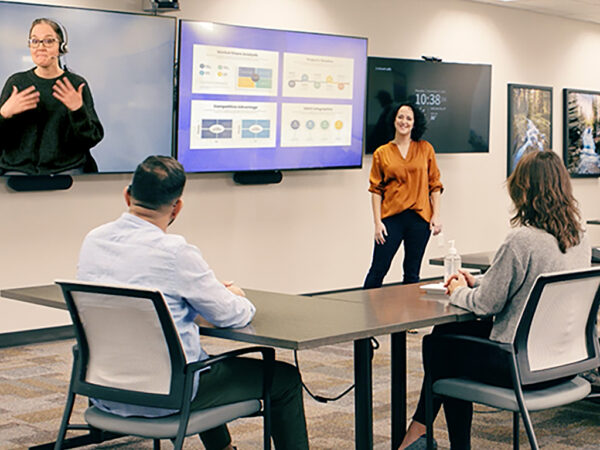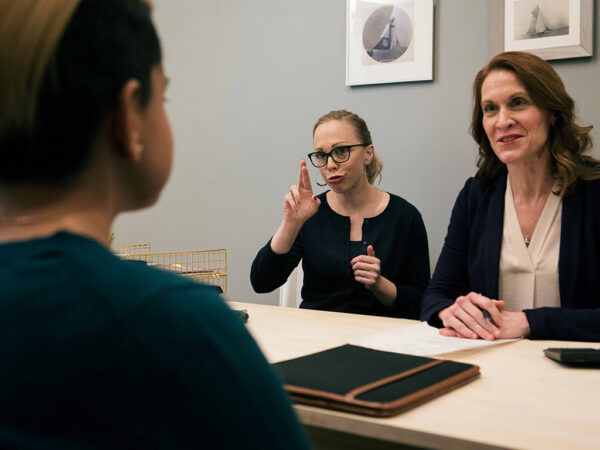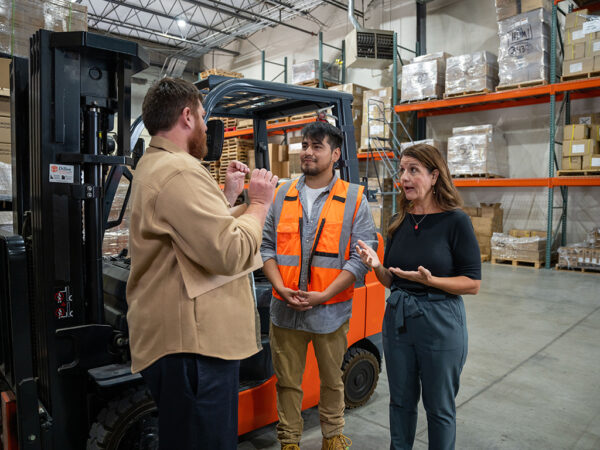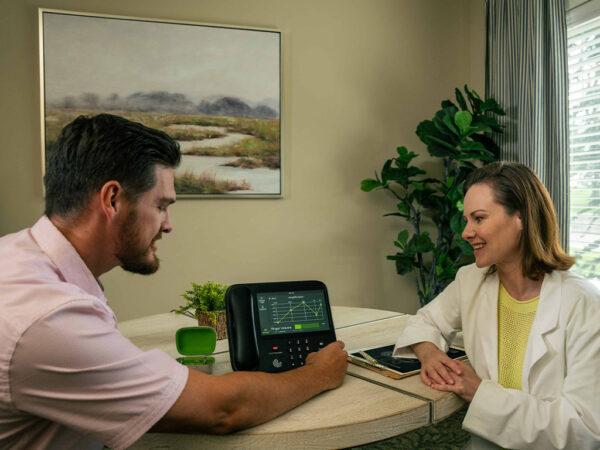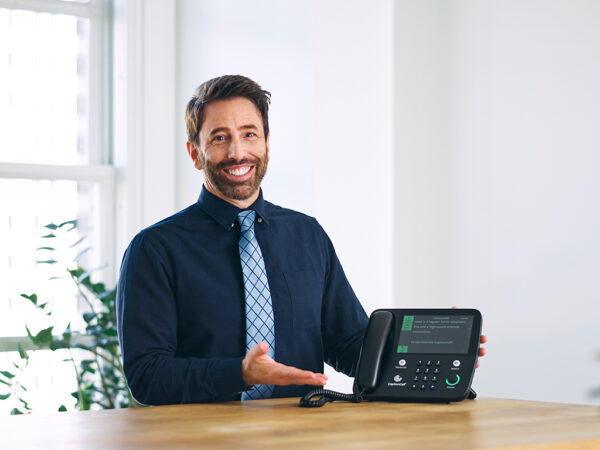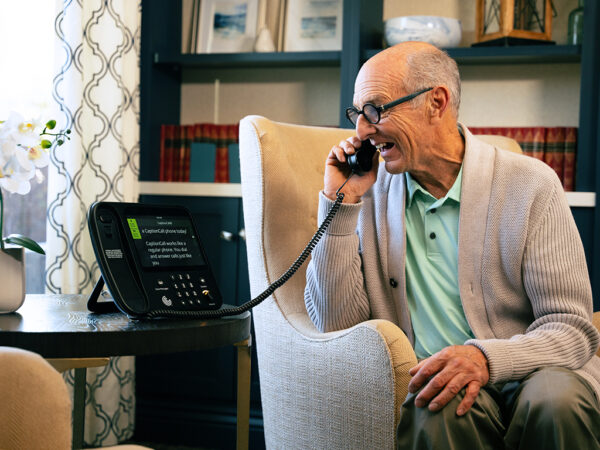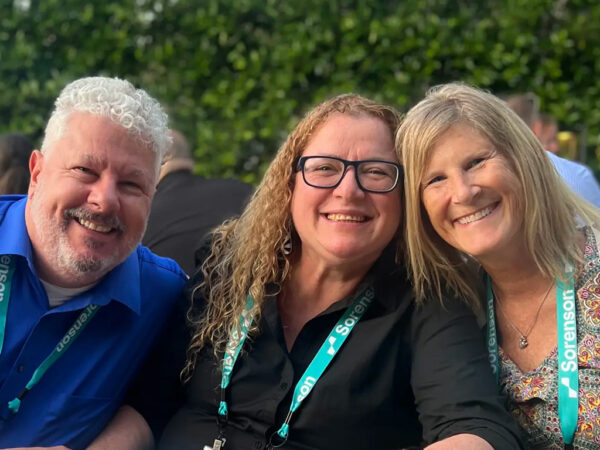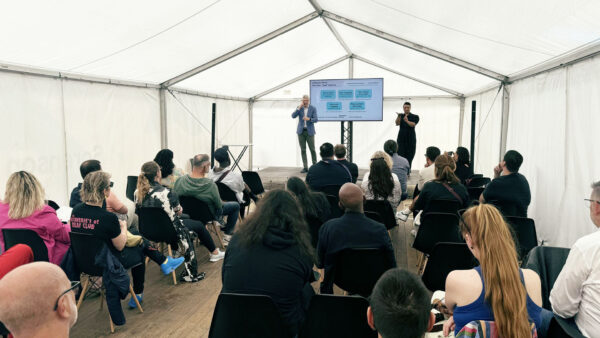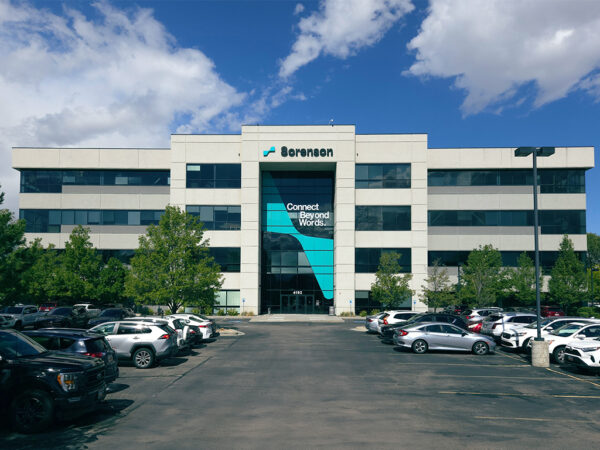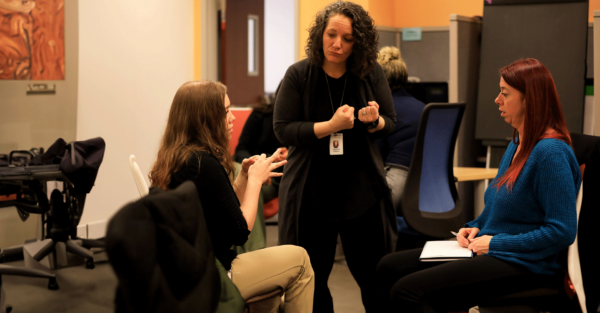Evolution of Hearing Aid Technology
March 3, 2025
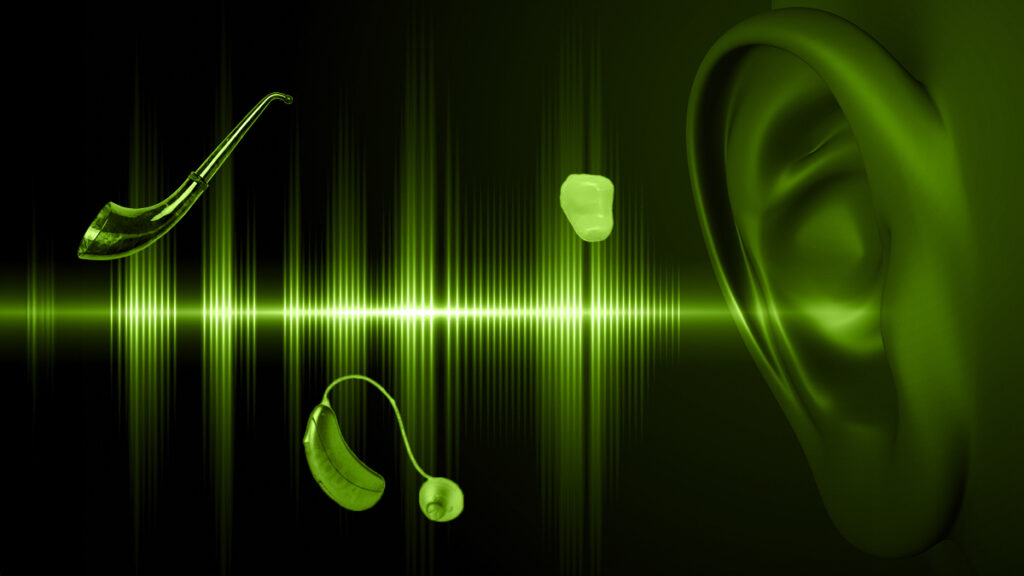
From stigma to smart devices: the evolution of hearing aid technology
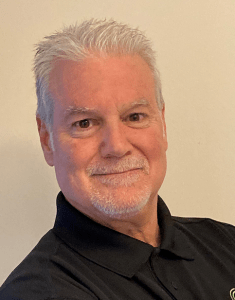
By Stephen DeMari
Stephen DeMari has more than 35 years of experience in the audiology and hearing aid industries and holds a master’s degree in audiology from Syracuse University. He is a member of the American Academy of Audiology and the American Speech-Language-Hearing Association.
People have, in one form or another, used assistive hearing devices for hundreds of years. Hearing loss solutions have mirrored the technological resources of the time, and that means people with hearing loss today are far better off than in the times of our ancestors.
We’re going to revisit our hearing aid past, following major developments through history and the driving forces behind innovation in hearing aid technology:
- Demand for hearing assistive technology
- Early hearing aids
- Hearing aids enter the digital age
- Modern hearing aid technology
- Latest hearing aid technology: Artificial Intelligence
- Prescription vs OTC hearing aids
Let’s start with a couple significant factors in the surge of assistive listening advancement in recent years: an era of rapid technological growth and a bump in demand as the number of people with hearing loss climbs.
Rising hearing loss driving demand for hearing assistive technology
When the World Health Organization (WHO) first reported global hearing loss statistics in 1985, it estimated 42 million people around the world had moderate to profound hearing loss, which was about 1% of the population. By 2018, that number had risen to 466 million and more than 6% of the population.1
Researchers don’t see a reversal on the horizon in this rising hearing loss trend. Just the opposite, in fact. By 2050, the WHO predicts more than 900 million people will have moderate to profound hearing loss. By United Nations population projections, that will be about 9% of the world.2
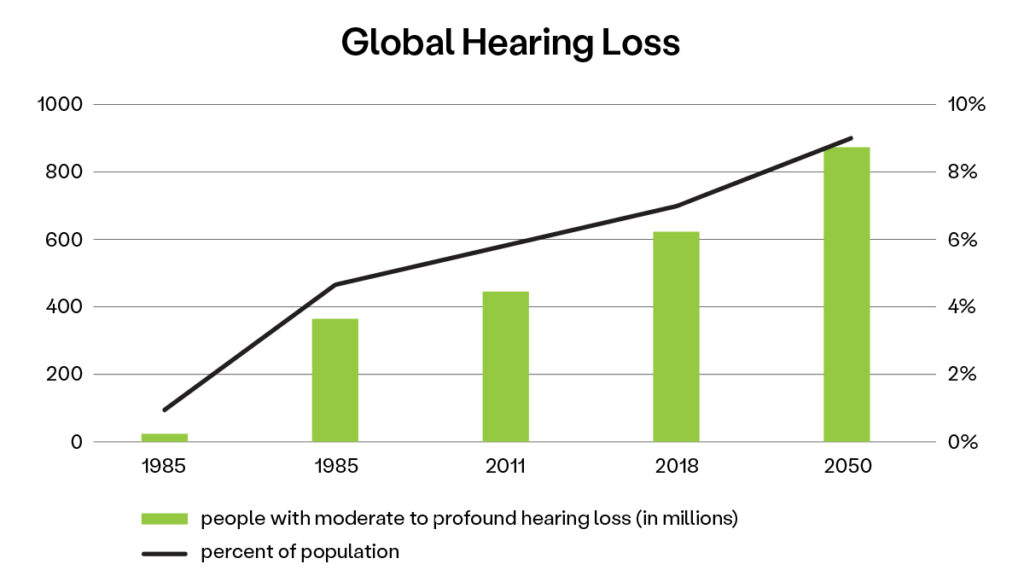
Younger generations embrace hearing aids
One of the standout findings of modern hearing loss statistics is how many young people are hard-of-hearing. In the U.S. alone, 17% of teenagers and almost 20% of people in their twenties have noise-induced hearing loss, based on data from the CDC’s National Health and Nutrition Examination Survey.
While those numbers are discouraging, the response is just the opposite:
- Some hearing healthcare providers say they’re now seeing as many patients seeking hearing protection, like custom earplugs, as those needing treatment for hearing loss.
- Young people are leaning into hearing aids, with people under 55 accounting for the biggest increase in hearing aid fittings over the past several years, especially since over-the-counter hearing aids became available.3
The eager uptake in hearing assistive technology isn’t an isolated anomaly. It’s part of the broader societal adoption of integrated wearable tech that enhances our lifestyles and wellbeing.
History of hearing aid technology
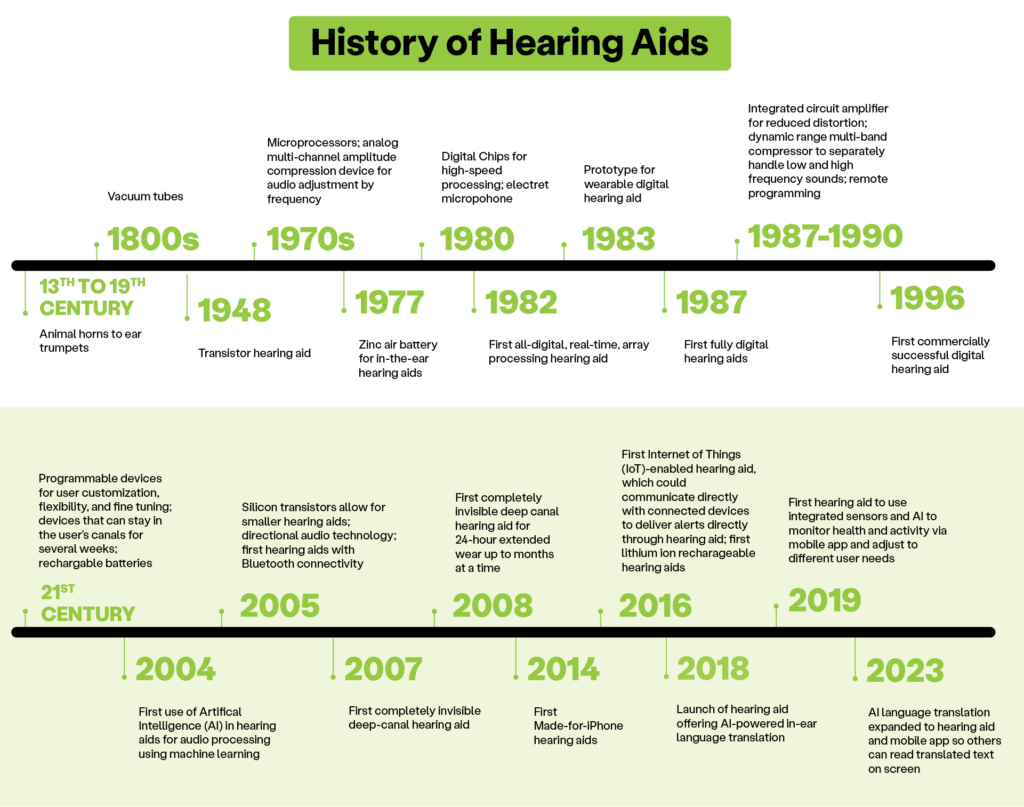
Hearing aid technology has come a long way in recent decades, offering people with hearing loss a chance to experience clearer and richer sound in everyday life. To understand how dramatically hearing aid options are improving, we’ll review where they started and show how we got to the latest hearing aid technology incorporating artificial intelligence (AI).
Early hearing aids: ear trumpets to vacuum tube hearing devices
The use of hearing aids goes back centuries. As far back as the 13th century, people began using hollowed out animal horns to amplify sounds, paving the way for the invention of manmade ear trumpets in the 17th century. These primitive solutions amplified all sound indiscriminately, so noises would seem louder but not necessarily clearer. This was the best option available through the 19th century.
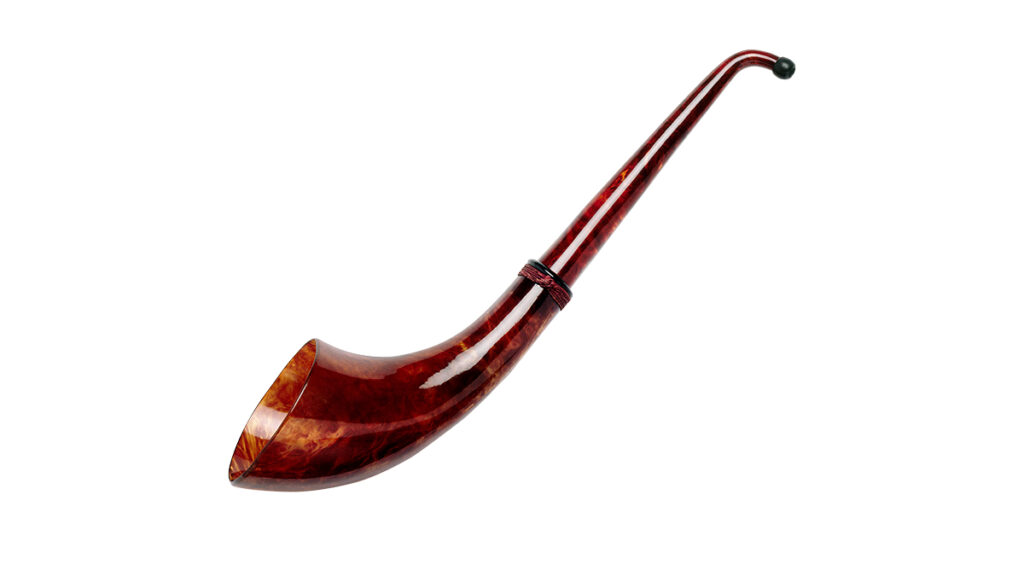
When telephones came along in the late 1800s, they paved the way for the invention of the first electronic hearing aids. Making use of telephone transmitters, vacuum tube hearing devices ushered in the age of amplifying sound as electrical signals in the early 1900s. While vacuum tube hearing aids were technically portable, the first models were too bulky and cumbersome for this to be practical.
It was the second half of the 20th century when the pace of hearing aid advancement quickened, starting with the first transistor hearing aid in 1948. It marked a milestone in the development of sophisticated hearing aid parts that made devices smaller, lighter, and more reliable.
Then, just as the invention of the telephone sparked a breakthrough in hearing aid technology a century earlier, the rise of computers initiated the start of the hearing aid revolution in the 1970s:
- microprocessors allowed hearing aids to further shrink
- amplitude compression enabled devices that emphasize specific frequencies
- the first zinc air battery provided a compact power source for in-the-ear hearing aids
The digital age: laying the groundwork for modern hearing aid technology
The advent of digital processing in the 1980s was a turning point for hearing aids. The first digital hearing aids appeared in the early 80s, exciting the hearing health industry with the potential for great advantages over analog devices:
- Better sound quality: Digital processing allows more precise amplification and digital noise reduction.
- Programmability: Digital models enable programming for different listening environments along with tailoring amplification and filtering to specific needs.
- Feedback cancellation: Digital hearing aids can eliminate the whistling sound that was common with analog hearing aids.
- Directional microphones: The first modern twin microphone hearing aid in the early 90s could focus on sounds coming from in front of the wearer for clearer conversations, even in noisy surroundings.
Scientists continued to fine tune these features, introducing technology in the late 80s to reduce distortion and separately process high and low frequencies. In 1996, more than a decade after the introduction of the first fully digital hearing aid, the technology achieved its first commercial success.
That proof of viability in the hearing health market opened the flood gates to another surge of technological advances as we entered the 21st century.
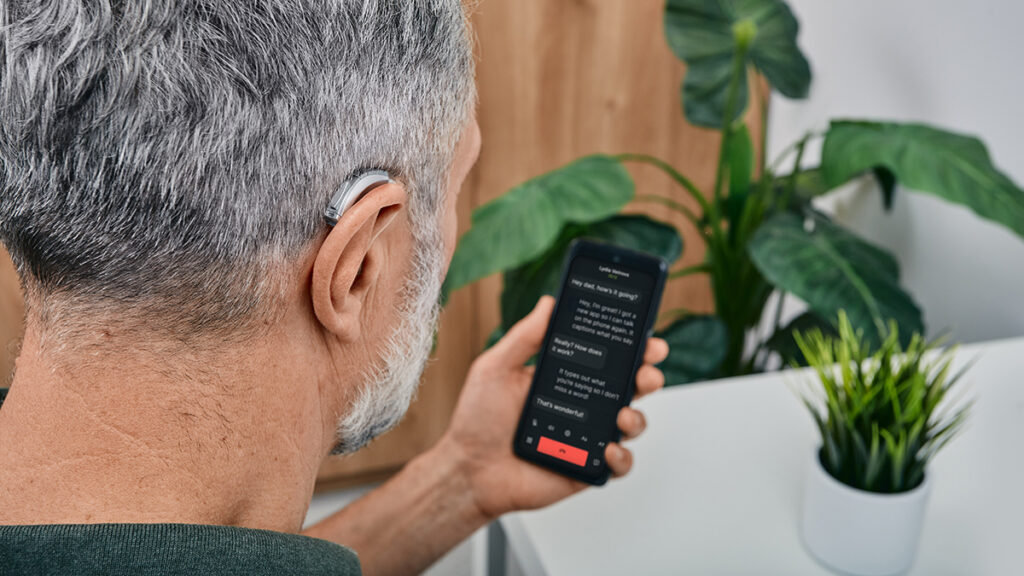
Modern hearing aids: accessories for active lifestyles and connectivity
In the early 2000s, we started seeing the developments that have transitioned hearing aids from strictly hearing loss treatment to integrated life-enhancing accessories for people with hearing loss. Technological leaps forward delivered significant hearing aid improvements on several fronts:
- Size: Hearing aids became smaller and more discreet with silicon transistors, allowing them to fit (literally) a variety of lifestyles comfortably and safely. Some models even sit inside the ear (in-the-canal/ITC and invisible-in-the-canal/IIC) where they’re out of sight and out of the way.
- Bluetooth connectivity: We also saw the first Bluetooth hearing aids in 2005. This technology makes it possible to pair hearing aids with electronic devices like smartphones or even CaptionCall home phone (see how to pair CaptionCall with your hearing aids) for hands-free phone calls, streaming music and audio, and managing hearing aids via a mobile app.
- Rechargeable batteries: The introduction of rechargeable built-in lithium ion batteries eliminated the need to frequently replace these critical hearing aid parts.
While artificial intelligence (AI) has blown up in the past couple of years, it made its debut in the hearing aid industry 20 years ago with audio processing using machine learning. Like most applications of AI, hearing aid makers have since expanded on the potential uses of the technology.
The latest hearing aid technology: exploring the possibilities of AI
Today’s cutting edge hearing aid technology is further integrating artificial intelligence for an adaptive user experience. Now the most technologically advanced hearing aid is AI-powered and can analyze the surrounding audio in real-time and automatically adjust settings to the environment, even learning users’ preferences:
- Personalized listening: AI can analyze how someone uses their hearing aids in different situations and automatically adjust settings for optimal performance.
- Improved noise reduction: AI hearing aids dynamically suppress background noise in crowded and loud environments, allowing users to listen intentionally rather than feel overwhelmed by sound.
- Speech focus: AI can identify and focus on specific voices, making it easier for the hearing aid wearer to follow conversations even in noisy surroundings.
- Machine learning: AI hearing aids can learn and adapt to the user’s listening preferences and provide a custom hearing experience.
- Language translation: The first AI-powered, in-ear language translation hearing aid feature launched in 2018, translating speech in 27 languages in real time. In 2023, that functionality expanded to a hearing aid companion mobile app, so others could also read translated text on a mobile device.
Where to get hearing aids: OTC vs. a hearing health professional
Another major development in the hearing aid industry was the U.S. Food and Drug Administration (FDA) decision to allow over-the-counter hearing aid sales, starting in 2022. The change caused significant debate about the impact on the hearing health landscape: the benefits of increased access and affordability compared to the risk of forgoing professional hearing aid fitting and treatment.
Is it better to get a hearing aids from an audiologist?
In short, yes, it’s best to get hearing aids from an hearing health professional. An audiologist or hearing aid specialist has the expertise to assess hearing loss and recommend a personalized treatment plan, which may include hearing aids. Getting hearing aids through a qualified healthcare professional allows them to customize the settings to specific hearing needs and make adjustments as needed.
A hearing health provider may also recommend complementary solutions — like no-cost captioned phone service, bimodal stimulation devices for tinnitus, or lifestyle changes to improve hearing naturally — as part of a comprehensive hearing loss treatment plan. Most people find out about CaptionCall from the roughly 17,000 hearing health professionals across the U.S. who recommend it.
Who’s a good fit for over-the-counter (OTC) hearing aids?
When the FDA approved the sale of over-the-counter hearing aids, the idea wasn’t to replace prescription hearing aids. OTC hearing aids aren’t for everyone. They may, however, be a solution for some people
- with mild to moderate hearing loss.
- without insurance coverage.
- who cannot afford prescription hearing aids.
Generally speaking, OTC hearing aids offer more affordable options, making them a possibility for individuals who would otherwise go without hearing aids altogether because of cost. Keep in mind, the tradeoff for lower cost is often fewer features. Users looking for cutting edge hearing aid technology are less likely to find it in even the best over-the-counter hearing aids. The FDA offers further guidance on who might consider OTC hearing aids.4
Affordable hearing aids
Having read this much about the sophisticated technology powering hearing aids, it should be no surprise they can be expensive. However, it’s not impossible to find more affordable hearing aid options. Prices vary considerably based on features and technology, plus there are resources that may curb costs:
- Explore different brands and models: Hearing aids with advanced features don’t always have a premium price tag. Researching several manufacturers and models may uncover a device that blends functionality and affordability.
- Don’t dismiss refurbished devices: Some retailers offer refurbished hearing aids at discounted prices. Reputable sellers will have professionally repaired and tested these devices to ensure they function like new.
- Check for manufacturer discounts and promotions: Manufacturers may offer discounts for Veterans, seniors, and low-income individuals as well as financing programs.
- Check with your insurance provider: Some insurance plans partially cover of the cost of hearing aids. Does Medicare Pay for Hearing Aids?
- Research financial assistance programs: There are several federal, state, and non-profit programs across the U.S. that may be able to provide financial assistance to help with the cost of hearing aids.
Conclusion: hearing aids among today’s wearable wellness accessories with advanced technology
Has hearing aid technology improved? Vastly. Is hearing aid technology improving still? Faster than ever. Modern hearing aid capabilities and their rapidly expanding functionality have earned the latest hearing aids a place among today’s trending wearable technology.
Equally important as the built-in features of advanced hearing aids is their readiness to integrate with a variety of assistive technology. AI hearing aids with Bluetooth capabilities can extend and enhance the technology many people already rely on in their daily lives, transforming attitudes about hearing aid use.
With or without hearing aids, people who struggle on the phone because of their hearing loss and need captions for their calls can sign up for federally funded call captioning service at no cost for home phone or mobile.







